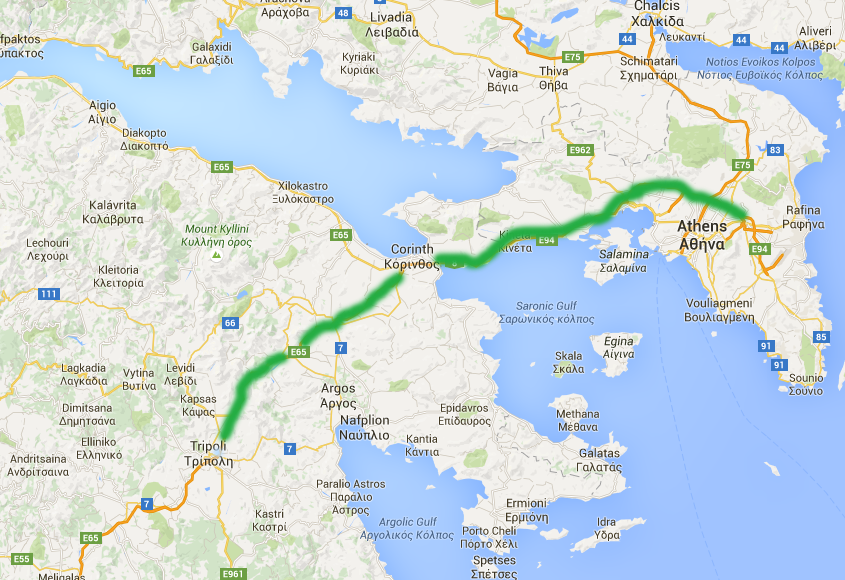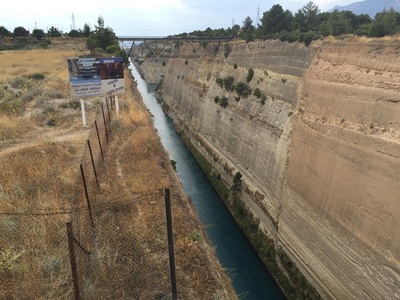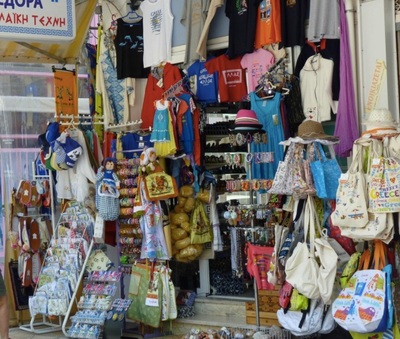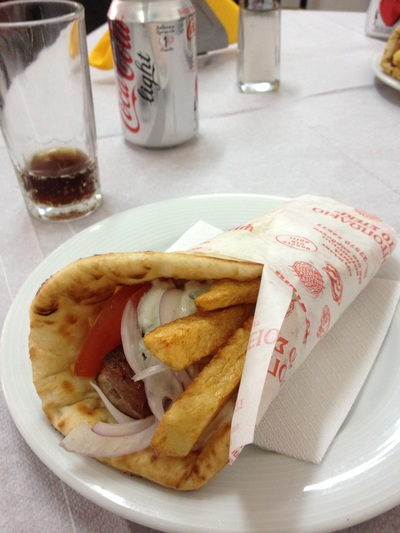Wending Northeast to Athens - Aegean
|
aFWh.Aegean refers to the Aegean Sea on the East side of Greece and the region that borders the sea. While the Ionian side of Greece has been influenced culturally and politically by centuries of contact with Italy and the West, the Aegean areas of Greece were much more integrated with Eastern Byzantine events and the experiences of the Ottoman occupation and dominance. While the church prevailed (and acted as a cohesive element that helped to fuel the nationalism of 18th and 19th century Greece) the Cyclades and Aegean islands experienced and absorbed invasions from the East.
We traveled a route northeast in the Peloponnese through Sparta, Tripoli and crossed the Corinth Canal to the Greek mainland in late afternoon. The canal is 4 miles long, 70 feet wide and provides nautical passage through the Isthmus of Corinth between the Saronic Gulf and the Aegean Sea. While Roman rulers in Ancient Greece wanted to build the canal it did not happen until 1883. The canal never achieved its economic potential because of landslides and physical limitations; it mainlyserves tourist traffic. Stiff from hours on the bus, we made a quick stop in Corinth for bathroom breaks, snacks and a walk across the bridge over the canal. We were leaving the charm of the countryside, moving towards the city, road weary and tired. Though there are beautiful views of the sea on this highway, it could have been a highway outside any city. |
We arrived Athens for a quick dinner at a city hotel near Omonoia Square. The following morning we drove to Pireaus to board the boat for a day in Aegina and a visit to the Cathedral of St. Nektarios. |



